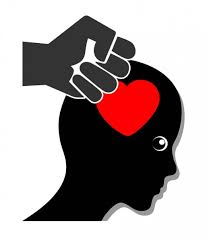Stockholm Syndrome (symptoms) is a rare psychological disorder in which hostages develop an emotional attachment to their captors. It’s also known as the “capture-bonding” or “prisoner-of-war syndrome.” This blog post will explore what Stockholm Syndrome is, how it manifests itself, and when someone might have it.
We’ll look at some high-profile cases of Stockholm Syndrome so you can see what people are capable of when encounter hostage by someone else. Finally, we’ll provide expert opinions on this condition for those who need more information about its causes and treatment options.
Contents
What Is Stockholm Syndrome?

According to the International Society for Human Ethology, Stockholm Syndrome is a “strong emotional bond between an abused person and his or her abuser.” This strong attachment can develop after just one incident involving physical violence. It’s also known as capture-bonding because it typically occurs during hostage situations when people are being held against their will.
Stockholm Syndrome is a psychological disorder, but it’s not recognized as an official diagnosis by the American Psychiatric Association (APA). However, certain symptoms are commonly associated with this condition.
How Common Is Stockholm Syndrome?
The true prevalence of Stockholm Syndrome is not clear because it’s not an official diagnosis. However, experts believe that it’s more common than most people think. Dr. Frank Ochberg, a psychiatrist who specializes in Stockholm Syndrome, states that about 80 percent of hostages experience at least some symptoms of the condition during their captivity.
History Of Stockholm Syndrome
The term “Stockholm syndrome” was first coined by criminologists and psychologists in Sweden after a bank robbery took place on August 23, 1973. Four people were held hostage for six days at the Kreditbanken by Jan-Erik Olsson and his three accomplices. During this time, the hostages began to feel sympathy for their captors as they formed what Dr. Ochberg called an “emotional bond.”
In a study published in the Journal of Police Science and Administration, Dr. Ochberg claimed that hostages felt “positive feelings” toward their captors because they were being threatened with death if the police tried to rescue them. The victims began identifying with their captors as a way to cope with this threat and started denying it when interviewed by the police.
Understanding Stockholm Syndrome

There’s not one single explanation for why people develop Stockholm syndrome, but there are several factors that can contribute to its development in any hostage situation. According to Dr. Ochberg, these include:
- Physical or sexual assaults by captors during captivity
- Threats of violence against loved ones
- Isolation from the outside world
- Perception of captors as benevolent or helpful
- Positive reinforcement by captors
Causes Of Stockholm Syndrome

There’s no one-size-fits-all answer to this question since Stockholm syndrome can be a consequence of a variety of different factors in any hostage situation. However, some of the most common causes include the ones that we’ve already mentioned, such as physical or sexual assaults, threats against loved ones, and isolation from the outside world.
Types Of Stockholm Syndrome
There are three main types of Stockholm syndrome:
Positive Identification
In this type, hostages come to see their captors as benevolent people who are only trying to help them. This often occurs when captors try to act like they’re the victims’ friends or offer them favors.
Negative Identification
In this type, the hostages see their captors as evil and dangerous people. They may experience a lot of anger and hatred toward these individuals.
Conversion
In this type, hostages develop physical symptoms (such as headaches or nausea) in response to the stress of the hostage.
Degrees Of Stockholm Syndrome
There are four degrees of Stockholm syndrome:
Minimal
To this degree, hostages only experience a few mild symptoms and don’t feel very attached to their captors.
Moderate
To this degree, there are more significant symptoms and a stronger emotional bond with the captors.
Severe
At this stage, hostages form a complete emotional attachment to their captors and may even defend themselves against authorities.
Extreme
This is the most severe degree of Stockholm syndrome, where hostages may exhibit signs of psychosis or suicidal behavior.
Symptoms Of Stockholm Syndrome
To qualify as Stockholm syndrome, hostages must experience at least three of the following symptoms:

- Positive feelings toward the captor
- Negative feelings towards authorities or other outsiders
- Happiness in response to good treatment by the captors
- Inability to engage in behavior that could result in escape from captivity
- Lying or providing false information about the captors and their motives
- Trying to persuade family, friends, and authorities not to rescue them from their captors even when a chance to escape presents itself
NOTE: These feelings may be an outcome of several different factors and vary from victim to victim.
Psychological Explanation Behind Stockholm Syndrome

The Stockholm Syndrome is a psychological phenomenon in which hostages express empathy and sympathy and have positive feelings toward their captors, sometimes to the point of defending them.
Though not always present during hostage situations or kidnappings, this syndrome can develop when:
- People spend a long time with the captor(s),
- Total dependence on these individuals for survival, and
- The captors believe that their hostages are willing to die for them.
These symptoms become moderate by another, the different psychological phenomenon known as Dissociative Identity Disorder (formerly called Multiple Personality Disorder). It is not uncommon for someone with this disorder to have several personalities that emerge in response to trauma or stress. One personality, usually the one most in line with societal norms, may repress memories of the traumatic event while another personality is more likely to embrace and act on them.
What Does It Point Towards Human Psychology?
The Stockholm Syndrome is a clear example of the psychological concept known as “the self-preserving ego.” This phenomenon occurs when an individual’s basic instinct for survival overrides any other feelings or emotions that they may have.
In this case, the hostage’s natural inclination to survive and protect themselves (as well as their loved ones) leads them to develop positive feelings and even defend their captors.
Expert Opinion On Stockholm Syndrome

The most famous case of Stockholm syndrome is that of Patty Hearst, who was kidnapped by members of a leftist terrorist group in 1974. She eventually joins them and participates in several bank robberies before she encounters capture by the authorities again after two years.
Stockholm syndrome can happen in any hostage situation, but it’s not common. While some hostages may develop the symptoms of Stockholm syndrome while they live as a captive. However, many other factors influence its development or lack thereof. Such factors include whether or not there are threats against loved ones. And if the captors regularly engage in violence toward their captives.
High Profile Cases Of Stockholm Syndrome
While Stockholm syndrome can happen in any hostage situation, there have been a few high-profile cases in history. Some of the most famous examples include:
- Patty Hearst, who was kidnapped by members of a leftist terrorist group in 1974, and
- Natascha Kampusch, who was held captive for eight years by a man she referred to as “Uncle Fritz.”
Movies And Books On The The Theme Of Stockholm Syndrome

There have been a few movies and books that explore the theme of Stockholm syndrome.
- One example is the movie “Proof of Life,” which stars Russell Crowe and Meg Ryan. The film tells the story of a hostage who falls in love with her kidnapper.
- Another example is the novel “The Hostage” by author Robin Cook, which tells the story of a woman who lives as a hostage with a terrorist group and develops feelings for her captor.
Conclusion

Stockholm syndrome is a psychological phenomenon that can develop during hostage or kidnapping situations. It comes with positive feelings toward the captors and negative feelings towards authorities or other outsiders. In this syndrome, the hostages form an emotional bond with their captors and even defend them against outside forces.
Stockholm Syndrome, however, has other causes as well such as Dissociative Identity Disorder (formerly called Multiple Personality Disorder) and long-term abuse by the captor. While it’s not always present, Stockholm Syndrome can develop when there are instances of spending long hours with the captor. The total dependence on these individuals for survival, and the captor’s belief that their hostages are willing to die for them are common explanations.
If you are looking for affordable Online Counseling MantraCare can help: Book a trial therapy session


